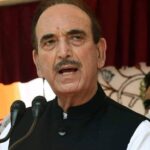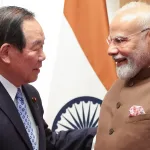India’s active role in assisting Africa secure its liberation from colonialism and racial discrimination, helping it to navigate the Cold War era through the Non-Aligned Movement (NAM), and partnering with the continent to accelerate its socio-economic development has moulded the trajectory of India-Africa relations in the 20th century. In its last decade, Africa was seen embarking on a renewed journey of Pan-African integration as it worked to replace the Organization for African Unity (OAU) with the African Union (AU), and to re-define its vision of a new Africa as delineated, a little later, in its ‘Agenda 2063’ document. This trend, coupled with India’s economic imperatives and “a new scramble” for Africa’s resources and friendship led by China, drove India to step up its Africa diplomacy. Against this backdrop, the first seven years of the 21st century (2000 to 2007) witnessed the beginning of a series of new economic and diplomatic initiatives. One of them was the start of negotiations with the AU for the commencement of a Pan-African dialogue that could well complement India’s bilateral and regional diplomacy in the African continent. The suggestion to begin a dialogue with Africa found ready acceptance in New Delhi and it resulted in two editions of the India-Africa Forum Summit in April 2008 and May 2011 respectively. These summits were undoubtedly path-breaking initiatives that allowed India to increase its political attention as well as concessional finance and grant assistance to Africa. However, the limitation of this approach was that the two summits involved the participation of only a handful of African countries based on the Banjul Formula. Besides, after the second summit, the pace of implementation of decisions slackened, causing unhappiness all around. The first decade of the government led by Prime Minister Narendra Modi may be divided into two segments: the pre-Covid years, and the Covid and post-Covid period, with the end of 2019 as the dividing line. In the first segment, 2014 to 2019, several significant developments took place that demonstrated a new momentum in the growth and consolidation of cooperation between India and Africa. First, there was the third India-Africa Forum Summit that was hosted by India in October 2015. Abandoning the restrictive Banjul Formula of the past two summits, the Indian government invited all 54 African states. That was widely welcomed by the continent. The numbers about participation tell their story. All countries were represented at the third summit in Delhi, 41 of them at the level of the head of state or head of government. That turned out to be the largest ever physical gathering of African leaders in India. The summit was a message of renewed and increased mutual interest by the two sides. Referring to their ties, Prime Minister Narendra Modi said “It is a partnership beyond strategic concerns and economic benefits. It is formed from the emotional bonds we share and the solidarity we feel for each other.”A galaxy of African leaders spoke during the summit, shedding light on various important facets of the India-Africa relationship and voicing their resolve that it should be further strengthened and taken to a new level. The package of measures announced by Prime Minister Narendra Modi was substantial. It included a new concessional credit of USD 10 billion for the period 2016–2020 and an assistance grant of USD 600 million. The assistance grant comprised of the following: USD 100 million for the India-Africa Development Fund, USD 10 million for India-Africa Health Fund, the funding of 50,000 scholarships in India for the next five years, funds for the expansion of the Pan-Africa e-network, and institutions of skilling and training across Africa. As a result, India’s footprint in Africa was set to become bigger and better than what was planned at the previous two summits.
India-Africa Relations

Sign Up For Daily Newsletter
Be keep up! Get the latest breaking news delivered straight to your inbox.
By signing up, you agree to our Terms of Use and acknowledge the data practices in our Privacy Policy. You may unsubscribe at any time.
Leave a Comment Leave a Comment
Stay Connected
Latest News
Recent Posts
- Indian Army begins construction of the baghwati Nagar Bridge, the fourth bridge on the River Tawi
- PM Modi holds talks with Japan Parliament Speaker on India-Japan ties
- CBK Registers Two Separate FIRs against two Notorious Fraudsters in Land Fraud Case
- Delhi Airport issues passenger advisory amid inclement weather forecast
- Shri Mata Vaishno Devi Shrine Board refutes ‘negligence’ claims on pilgrim tragedy







